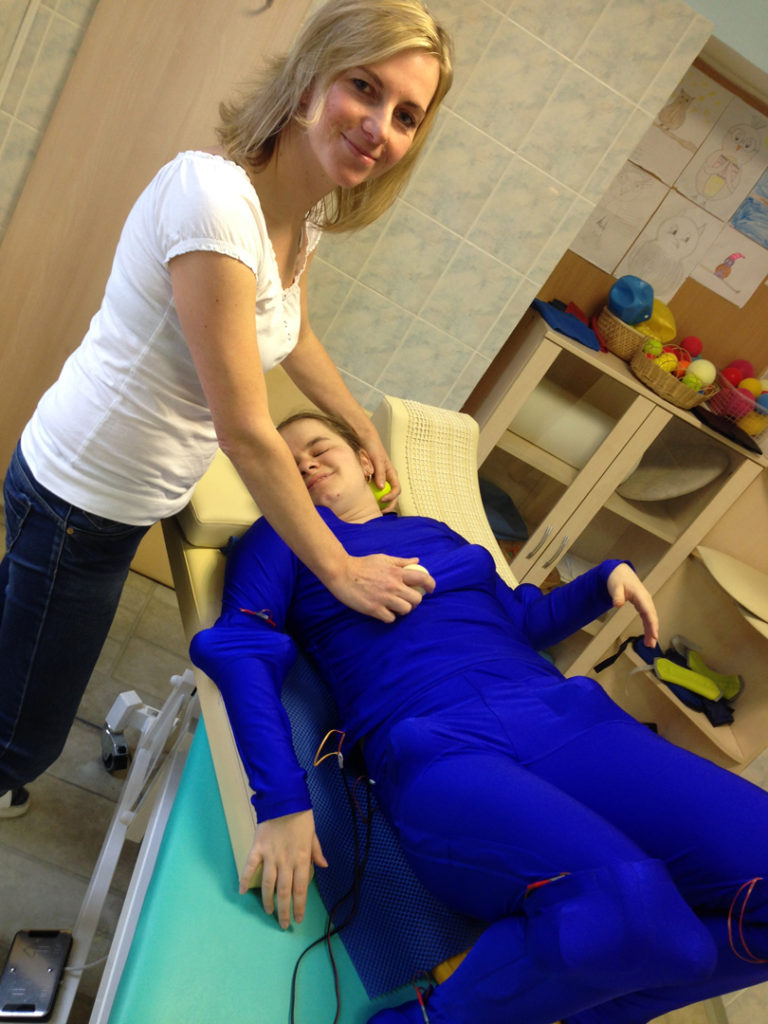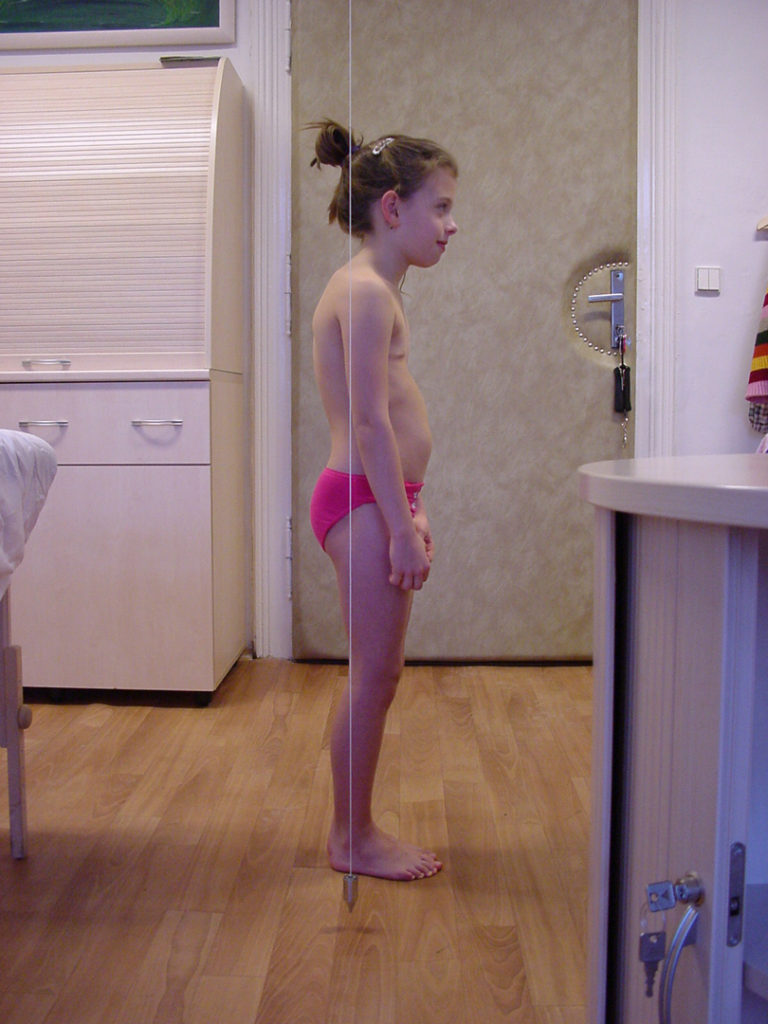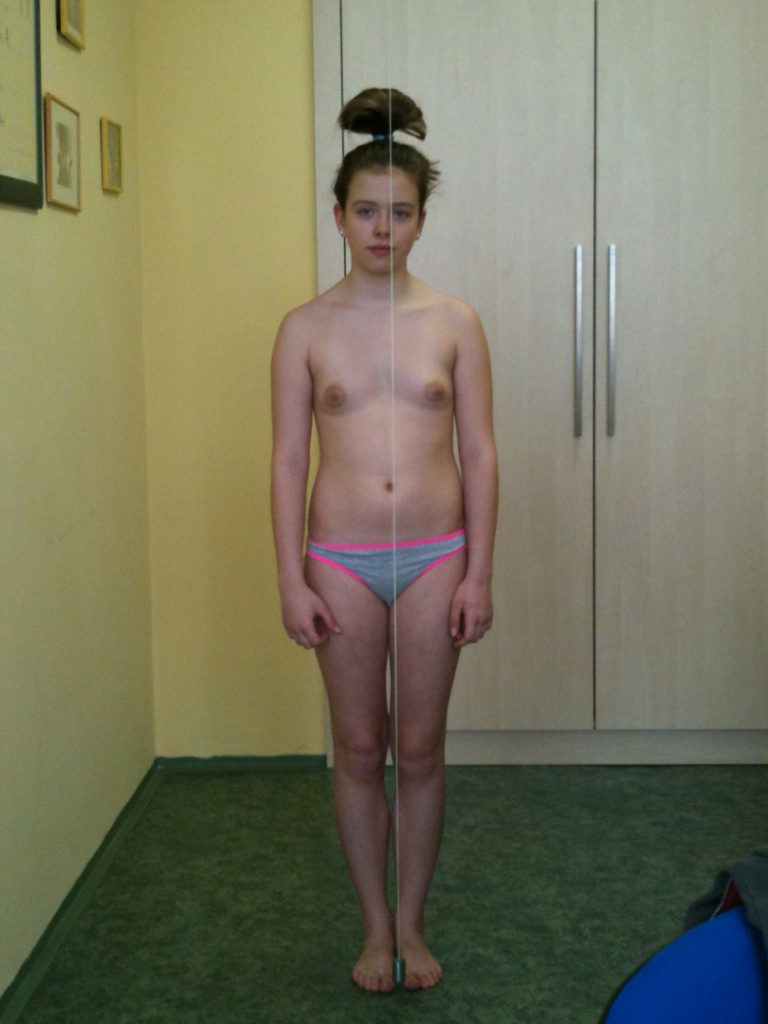 Basic Initial Conditions and Positions for Inducing the Reflexes
Basic Initial Conditions and Positions for Inducing the Reflexes
- On the back – reflexive turning 1
- On the side – reflexive turning 2
- On the stomach – reflexive crawling
- On all fours – reflexive crawling on all fours
Basic stimulation of reflex zones, placement and directions of the stimulation
- Basic inhibition of the induced movement
- Extension Positions and Therapeutic Accessories Facilitating the Course of the Reflex
- Gradual multiple stimulation of reflexive zones
- Partial labilisation of pelvis by Activa disc, wedge underlay of the pelvis with Activa disc
- Gradual longitudinal tilt of the bed, body lies on the adhesive pad (head goes higher than feet)
- Complete labilisation of pelvis by Activa disc by underlying the chest
- Tilting of the pelvic axis in the transversal direction with a wedge
- Tilting of the axis of the body in transversal direction
- Labilisation of other supporting points with inflatable balls
- Inhibition of the movement of the limbs with rubber straps
- Inhibition of the movement of the limbs with restraints
- Shift of the centre of gravity of the limbs with weights
Supporting Positions and the Equipment Facilitating the Induction of the Reflex
- Tilt of the medical lounge along longitudinal axis, with head slightly tilted down
- Placing supports under the feet
- Placing supports under the hands
- Placing supports under the pelvis with solid wedge
- Antalgic positions of the limbs and the axial organ
External Conditions of Stimulation for VM2G
- A quiet and peaceful environment, so patients are not disturbed
- Technical equipment, appropriate aids
- The ability to track time of individual stimulation and the overall stimulation
Education of the patients in VM2G
- To introduce the patient into a relaxed state
- To explain to him that it’s not necessary to hold the position, the reflex itself is going to “hold” in limbs in set positions against gravity,
- To explain that the perception of body’s scheme is going to be “switched off” gradually, and they will stop to feel where their limbs are located,
- To explain, that they will experience gradual manifestations of “autonomic joint centration”, i.e. the shiver, tremor and involuntary movement of the limbs and pelvis.
- Encourage the patient to report any discomfort (pain, tension in muscles, onset fatigue) that may arise
- To explain to the children not to “play” with the ongoing reflex and not to disturb it; distract them with singing, music, audio books, etc.
- Necessary diversion of the attention in children (singing, music, audio books…)

Severe developmental disorder of the posture of the body, initial scoliotic deviation of the spine, inverted sternum, funnel-shaped chest deformity and the forward pull of the head; 9 years of age. 
Severe developmental disorder of the posture of the body, initial scoliotic deviation of the spine, inverted sternum, funnel-shaped chest deformity and the forward pull of the head; 9 years of age. -

Severe developmental disorder of the posture of the body, initial scoliotic deviation of the spine, inverted sternum, funnel-shaped chest deformity and the forward pull of the head; 9 years of age.
-
Observing the Reactions Induced by VM2G Stimulation in the Patients
- Autonomy of the posture of the limbs against gravity
- Setting the angles of axes of the limbs and their changes
- Intensity of the reflexive movements, shivering, tremor
- The speed of the onset of fatigue
- Whether the stimulation does not cause pathological substitute posture of the limbs
- Duration of the uninterrupted stimulation, breaks, overall duration of therapy
Repeating the Therapy within One Day
- In children preferably 2 to 3 times a day
- In adults with respect to their possibilities at least once a day
Management of the VM2G Therapy Takes Place:
- According to actual intensity of the “system” response (tremor, size of movements…)
- According to patient’s individual responses (speed of onset of fatigue, pain, discomfort)
- According to changes in the autonomic regulation of posture of the body
- According to changes in autonomic regulation of joint centration
- According to changes in basic stereotypical movements
- According to changes in “extension” programs of soft and gross motor skills
- According to changes in regulation of superior nervous functions, improvement of phatic functions, abatement of dyspraxia, onset of fatigue, irritability

-

Normalising of the curved spine, position of the sternum and the shape of the chest; posture of the head has improved significantly; the Vojta method has been implemented for 4 years; 13 years of age.
-

Normalising of the curved spine, position of the sternum and the shape of the chest; posture of the head has improved significantly; the Vojta method has been implemented for 4 years; 13 years of age.
Reflexive Response of “the System” of the Patient in VM2G Therapy
-
- Autonomic posture of the body and limbs against gravity with no voluntary effort
- Gradual “switching off” of perception of the body scheme up to the level preceding falling asleep, the perception of the feeling of “loss of the body”
- Autonomic joint centration manifested with tremor, shiver and movement automatisms, particularly in hands, feet, whole limbs and pelvis.
- Gradual prolonging of the time of the patient’s tolerance of the stimulation without discomfort
- Increasing ability to tolerate the increase of strain through multiple stimulations, balance discs, tilted and longitudinal position of the medical lounger, tension of rubber straps, weights on the limbs
- Involvement of all muscles of the body in specific “mode” without fatigue during the performance of the therapy and afterwards
- There is no exhaustion within all stimulation zones; there is no adaptation to the stimulation
- The work of the muscles reveals specific fatigue, usually localised, caused by lack of muscle coordination, which subsides immediately after cessation of the stimulation.
Video – therapy of children and adolescents
Video – therapy of children and adolescents
Case Study
Illustration of Implementation of Tilted Medical Loungers and Labilising Discs
A seven-year old patient was admitted to our care due to milder disorder of the posture of the body. The patient’s mother worried about the future development of the locomotive apparatus of her daughter because chronic back pain had been apparent in the family for several generations; the mother herself had such problems, too. The patient admitted that she also experienced back pain sometimes but couldn’t localise it specifically. The patient didn’t have any other problems.
Description of the Problem
(Clinical Findings)
The history of the patient didn’t reveal any remarkable deviations from the normal psychomotor development. She started to walk at the end of the first year of life. The examination of the basic stereotypical movements was essentially normal. The only problem determined was weak diaphragmatic breathing. Autonomic regulation of the standing and the general axis of the body involved the deviations from the norm in the forward pull of the whole body in the ventral direction. Basic sagittal axis originating from the centre of the outer ankle joint didn’t come through the expected physiological points. In standing, there was apparent greater stress on the tips of feet than the heels. There was ventral tilt of the pelvis and ventral rotation of both shoulder girdles. The pelvis was tilted ventrally and the shoulder girdles were protracted. Her head was pulled forward, so it didn’t align with the axis.
Expert Explanation of the Problem
The origin of the disorder of the autonomic regulation of the posture of the body could most probably be caused by hereditary predisposition. The mother confirmed that the posture of her daughter was similar to her adolescent posture. During the first year of age, the patient could have experience a mild form of central coordination disorder, which would have contributed to impairment of the regulation of the motor skills. The relevant misalignment could be observed in the ventral tilt of the pelvis and the ventral posture of both shoulder girdles. Because of the family predispositions to chronic problems with the locomotive apparatus, the effort of the mother to seek a solution for her daughter to prevent eventual future problem, i.e. spinal problems, could be considered very prudent.
Illustration of the Solution
Although the problem with the posture of the body in this patient had seemed to be quite simple to solve, its correction took six years. The patient’s mother was highly motivated to help her daughter and so the therapy was carried out very carefully. The frequency of visits was set to once every four weeks. Improvement in the posture of the head, pelvis and shoulders began to be successful, especially thanks to the exercises on the tilted surface of the medical lounge. The longitudinal tilt of the medical lounge was technically provided by the adjustable setting of the lounger legs. The transverse tilt was secured by implementation of the training underlay. The balance discs and labilising restraints comprised the other aids that accelerated the improvement in posture of the body. The patient didn’t complain about back pain during the therapy.
Explanation of the Solution
The chosen therapeutic method of labilising the supporting points during the reflex exercises significantly helped to provoke the repair program of the regulation of the body. It was necessary to target the stimulation more on the involvement of the anteroposterior muscle chains than the oblique chains. Although it might seem that the curing effect hadn’t come for several months and the changes towards a normal state progressed very slowly, the direction of the therapy proved to be correct. Normalising changes were fully ossified within the following development and the final effect of the therapy brought very good results. It’s interesting that VM2G successfully intervened also in this case of assumed hereditary preconditions of the patient’s problems.
View of the Solution of the Problems with Autonomic Regulation of the Posture of the Body with the Help of Labilising Restraints and Tilted Training Surfaces
The exercise equipment on the tilted longitudinal surface in combination with tilted transverse surface significantly improved the correct therapeutic targeting. Combining both angles creates the conditions for activation of the torsion biomechanism of the body, whose direct muscular chains head through its imaginary centre. These torsion conditions were concurrently used to labilise the supporting points of the body. By joining the difficult initial spatial and adhesive preconditions, the induction and maintenance of the stimulation reflex become extremely challenging for the brain. Thanks to this, the therapeutic reflex runs extremely precisely and could be perceived in a specific part of the body. Implementation of this kind of therapy puts special demands on the physiotherapist because he has to manage to create the optimal extent of the load and explain the implementation of the stimulation as part of home exercise correctly. The optimal extent of the load is based on the current ongoing reflex response in the patient and on the actual dispositions of the patient.